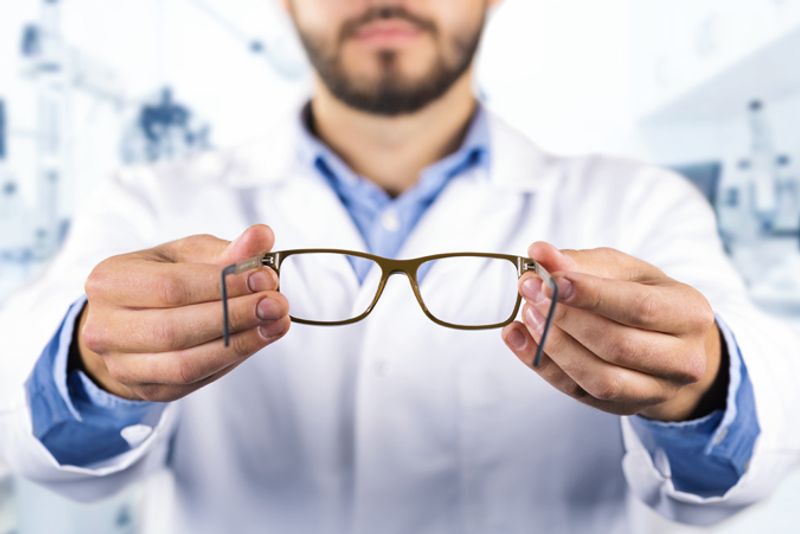The presbyopia conversation: Start early, individualize message
Outside of eye care, the term “presbyopia” is not commonly used or well understood — and it’s one that can be tricky to explain.
Many doctors avoid the topic altogether until a patient brings it up. But with myriad options for today’s presbyopes, including new topical drops now entering the market, it might be time to up your game.


It is important to be proactive when talking about presbyopia so patients understand what is normal and what to expect. I start planting the seeds when patients are 35 years old, letting them know that within the next 3 to 5 years they will likely see some changes in their vision. Once a patient becomes presbyopic, it’s important to recognize that presbyopia isn’t a one-time conversation. Their concerns and visual needs will change as they continue to lose accommodation.
Fortunately, technology is changing too. Lately, I’ve been talking to patients about opportunities with pupil-modulating presbyopia-correcting drops like Vuity (pilocarpine HCl ophthalmic solution 1.25%, Allergan/AbbVie), which is available now, and pipeline drugs such as Brimochol PF (carbachol/brimonidine tartrate, Visus Therapeutics) and others.
In talking to patients, I rarely use the term “presbyopia.” Instead, I talk about the focusing system becoming less flexible. I also try to describe what is happening functionally. Instead of using clinical terms like “near vision” or “intermediate vision,” I mention specific tasks like seeing the computer screen or car dashboard.
The range of options for correcting presbyopia is wide — from over-the-counter readers to bifocal or progressive spectacles, monovision, multifocal contact lenses, surgical options and eyedrops. Reviewing the pros and cons of each could overwhelm patients, so I focus on what I think will be best for that patient’s vision and lifestyle, and I keep the conversation simple. With multifocal contacts, for example, I don’t get into a lot of detail about the modulus or toricity, although those details factor into my lens choice. Similarly, with all the presbyopia-correcting drops in the pipeline, I expect that eventually I’ll choose a starting drop based on the mechanism of action, duration and side effect profile, and then adjust as needed.
One of the most important things we can do to make good choices for our presbyopic patients is to ask them to measure the distance to their computer screen (or other common tasks they are struggling with). That helps me identify what near add they might need to be more functional.
If I’m considering presbyopia-correcting drops, I want to make sure I have good baseline information on the patient’s retinal health and pupil size. Eye dominance is important for monovision corrections and potentially for drops as well.
It is very important to tailor the conversation to each patient’s story and their “pain points.” Those with heavy near demands will be bothered by presbyopia much earlier than someone who drives for a living. Higher myopes in single-vision glasses will lose function much earlier than low myopes. And emmetropes and latent hyperopes have the most difficult journey through presbyopia.
With the proliferation of new options — and especially topical drops for presbyopia — I’m considering creating a separate presbyopia consultation with its own fee structure and follow-up period, just as we do with contact lens exams. This would allow me to focus on all the lifestyle, anatomical and refractive elements of the presbyopia correction choice and then continue monitoring for success and adverse reactions for a 30- to 60-day period after dispensing.
I’m a big fan of patients having multiple forms of correction, because there is nothing that works perfectly in every situation or for every task. A patient might have one primary form of correction, but also glasses just for driving, computer progressives or daily disposable contact lenses for traveling.
Right now, I’m mostly offering Vuity drops when episodic use makes sense for the person’s lifestyle. The duration of effect isn’t long enough to satisfy someone who wants better near vision all day long, but I have patients who love using them on the weekends or when they are going out. I think presbyopia-correcting drops will have more of a starring role in my list of options in the future when we have a drop with the potential to last all day.
Regardless, I always want patients to know what new technologies are on the horizon. I might say, “Hey, there are some new presbyopia drops that I’m really excited about. I don’t think the one that is out right now is going to be a good fit for you, but let’s see what new options we have when you come in next time.”
Here are what I consider to be pros and cons of both currently available and future presbyopia-correcting drops:
- Vuity is available immediately and has good tolerability, but with a short duration of effect.
- CSF-1 (pilocarpine HCl 0.4%, Orasis Pharmaceuticals) may be next to market.
- MicroLine (pilocarpine 2%, Eyenovia) uses the unique Optejet mist dispenser instead of a dropper bottle.
- Brimochol PF is a fixed combination with a dual mechanism of action and duration up to 9 hours that also offers eye whitening.
- LNZ100 (aceclidine 1.75%, Lenz Therapeutics) has a duration of up to 7 hours.
Reference:
- Eye School with Dr. D. Presbyopia correction and treatment options. YouTube. https://www.youtube.com/watch?v=sBxX_wxcZFE. Published March 17, 2021. Accessed Oct. 21, 2022.
For more information:
Denton is in private practice at Salisbury Eyecare & Eyewear in Salisbury, North Carolina. She can be reached at melaniedenton@gmail.com.
